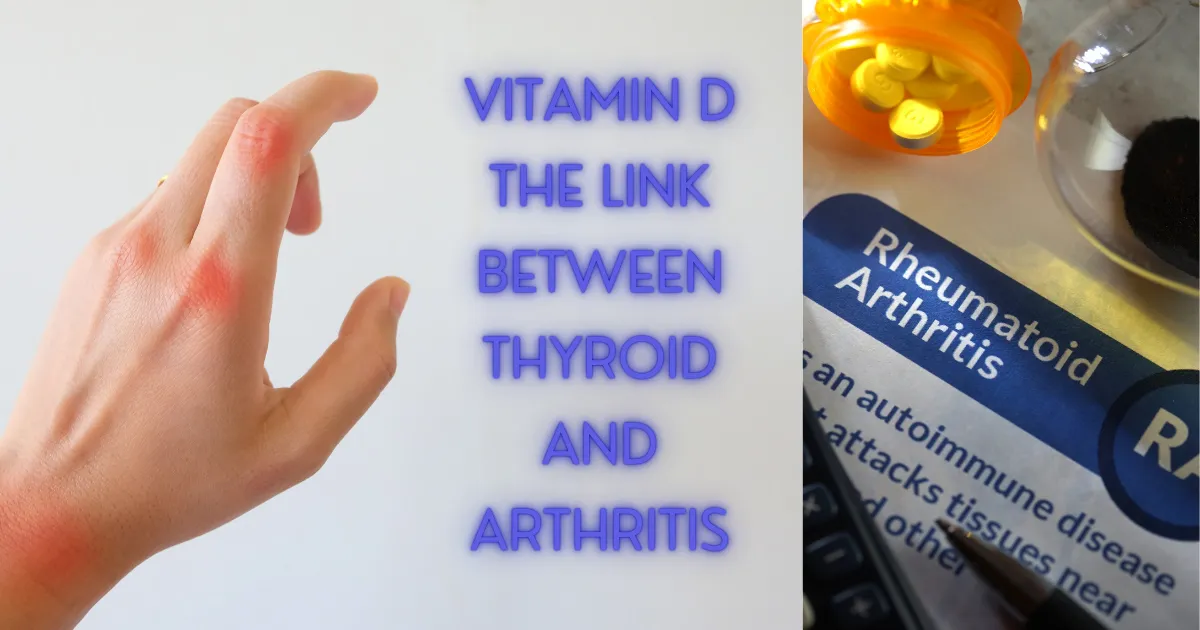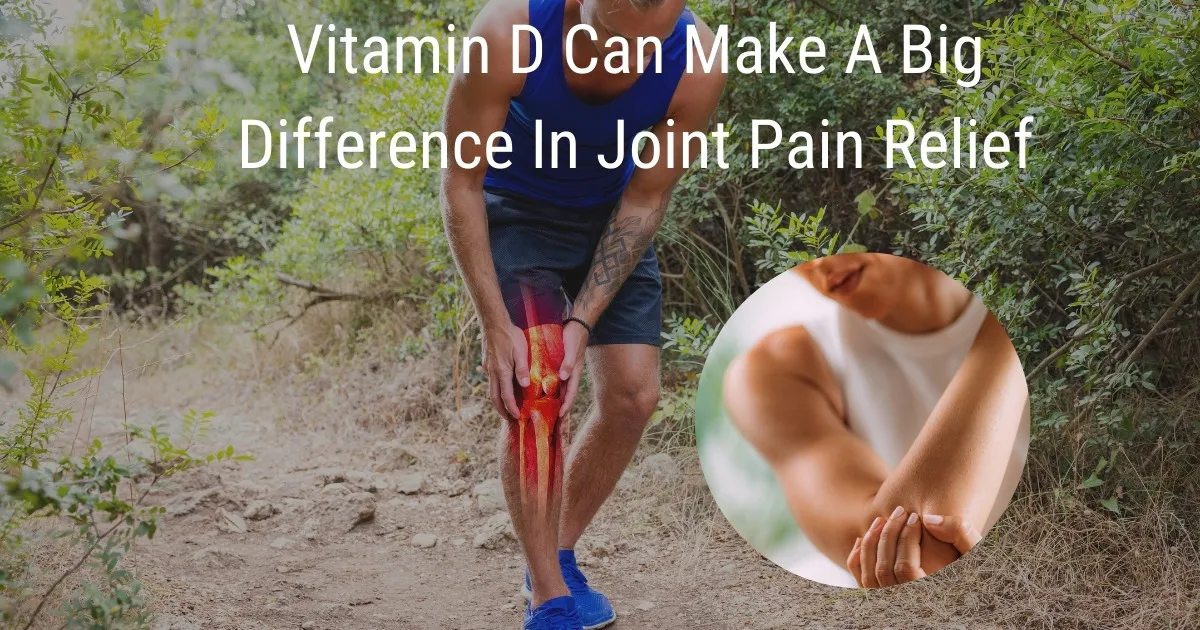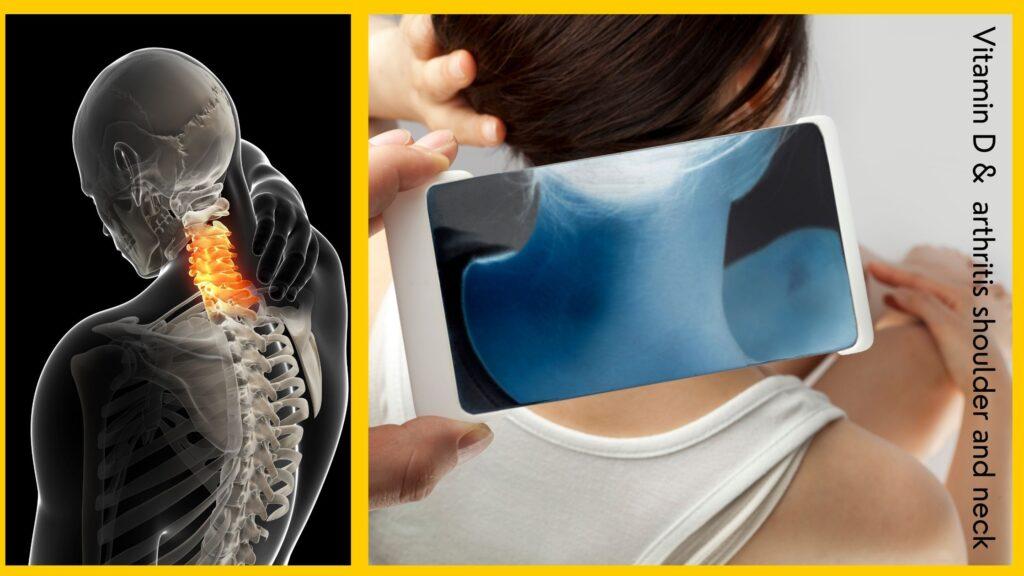Are you one of the millions struggling with joint pain, constantly searching for ways to alleviate discomfort and pain relief? What if the answer lies in something as simple and natural as vitamin D, a nutrient often overlooked in discussions about joint health?
- Symptoms of Vitamin D Deficiency
-
Why Vitamin D is Important for Women
- Recommended Daily Intake for Women
- How Women Can Get Vitamin D
- Vitamin D Supplements for Women
- Symptoms of Vitamin D Deficiency in Women
- Risks of Too Much Vitamin D
- What is Arthritis?
- How to Manage Arthritis
- Neck Exercises for Arthritis
- Exercises for Arthritis in the Neck - Joint Pain Relief for You
- Link Between Vitamin D Deficiency, Rheumatoid Arthritis (Best Joint Pain Relief for You)
- Is it Okay to Do Yoga with Arthritis?
- Is Yoga Good for Neck Arthritis?
- Sources & Credits:
As we age, our bodies may lose the ability to produce sufficient vitamin D from sunlight, leading to deficiencies that can exacerbate joint issues. Recent studies indicate a strong correlation between vitamin D levels and joint pain relief, suggesting that supplementing this crucial vitamin could be the key to regaining mobility and comfort.
Symptoms of Vitamin D Deficiency
Vitamin D deficiency is common nowadays. Many people don’t realize they are deficient until their doctor tells them. If you suspect you may be vitamin D deficient, look out for these signs and symptoms.
The human body requires vitamin D to absorb calcium from food and build strong bones.
Additionally, vitamin D helps regulate blood pressure, insulin levels, immune system function, mood, sleep patterns, and other bodily processes.
Vitamin D deficiency has become a growing problem over the years, primarily due to increased indoor time and reduced exposure to sunlight. This means our bodies aren’t absorbing enough vitamin D through sun exposure or supplements.
New research has found that vitamin D may play a significant role in joint health and that low levels may increase the risk of rheumatologic conditions such as arthritis. Several studies have found low blood levels of vitamin D (vitamin D deficiency) in patients with osteoarthritis of the hip, knee, and neck arthritis.
Vitamin D Deficiency ~ Rheumatoid Arthritis
The body needs vitamin D to absorb calcium, essential for building strong bones. Too little of this vital nutrient can lead to having thin, soft, and brittle bones, known as osteomalacia in adults and rickets in children.
Studies also have found that a lack of Vitamin D is linked to rheumatoid arthritis, an autoimmune disease characterized by swollen, aching joints, and numbness and tingling in the hands, arthritis in the big toe and feet.
Why Vitamin D is Important for Women
| Benefit | Description |
|---|---|
| Bone Health | Vitamin D is essential for absorbing calcium and maintaining strong bones. It helps prevent osteoporosis, a condition that women are at higher risk for, especially post-menopause. |
| Immune System Support | Adequate vitamin D levels play a role in supporting a healthy immune response, making it essential for overall immune function. |
| Muscle Function | Vitamin D contributes to healthy muscle function, which is vital for strength, mobility, and balance—especially as women age. |
| Potential Links to Other Conditions | Research suggests vitamin D may help reduce the risk of: - Breast cancer - Heart disease - Type 2 diabetes - Multiple sclerosis - PCOS (Polycystic Ovary Syndrome) However, more research is needed, and supplements have not consistently shown clear benefits for these conditions. |
| Pregnancy Health | Maintaining sufficient vitamin D during pregnancy can help reduce the risk of preeclampsia and low birth weight, promoting better pregnancy outcomes. |
Recommended Daily Intake for Women
| Age Group | Recommended Daily Intake |
|---|---|
| Ages 1-70 years | 15 mcg (600 IU) daily |
| Over 70 years | 20 mcg (800 IU) daily |
| Pregnancy and Breastfeeding | 15 mcg (600 IU) daily |
Note: Some experts suggest that these guidelines may be too low for optimal health, especially in individuals with limited sun exposure. Always consult with a healthcare professional to discuss your personal vitamin D needs.
How Women Can Get Vitamin D
| Source | Details |
|---|---|
| Sunlight | UV rays from the sun help your skin produce vitamin D. However, the amount produced depends on factors such as time of day, season, latitude, skin color, and sunscreen use. Relying solely on sunlight isn't recommended due to the risk of skin cancer. |
| Diet | Only a few foods naturally contain vitamin D. Key food sources include: - Fatty fish (salmon, tuna, mackerel, trout) - Fish liver oils - Egg yolks - Beef liver - Mushrooms (especially UV-exposed) |
| Fortified Foods | Many foods are fortified with vitamin D, including: - Milk (cow's milk and plant-based alternatives like soy, almond, and oat milk) - Breakfast cereals - Some yogurts - Orange juice |
Vitamin D Supplements for Women
| Consideration | Description |
|---|---|
| Low Blood Levels | Your doctor may recommend a supplement if your blood levels are low and you are not getting enough vitamin D from your diet and sun exposure. |
| D2 vs. D3 | Vitamin D3 is generally preferred over D2, as it raises and maintains blood levels of vitamin D more effectively. |
| Dosage | The appropriate dose depends on your individual needs and current vitamin D levels. Always consult your doctor to determine the right dosage before starting any supplement. |
| Taking Supplements | Vitamin D is fat-soluble, meaning it is best absorbed when taken with a meal or snack that contains fat. |
Symptoms of Vitamin D Deficiency in Women
| Symptom | Description |
|---|---|
| Fatigue | Feeling unusually tired or low on energy. |
| Bone and Joint Pain | Bone discomfort or joint pain, especially in the lower back and hips. |
| Muscle Weakness | Aches, cramps, or weakness in muscles. |
| Mood Changes | Increased feelings of depression, anxiety, or irritability. |
| Hair Loss | Increased shedding or thinning of hair. |
| Getting Sick More Easily | Frequent illness or infections due to weakened immune function. |
Risks of Too Much Vitamin D
| Risk | Symptoms |
|---|---|
| High Calcium Levels (Hypercalcemia) | Nausea, vomiting, and constipation. |
| Excessive Thirst and Urination | Frequent urination and increased thirst. |
| Muscle Weakness | Difficulty with movement or strength. |
| Confusion | Difficulty thinking clearly or remembering things. |
| Bone Pain | Intense or chronic bone aches. |
| Kidney Stones | Painful stones in the kidneys or urinary tract. |
| Heart Rhythm Issues | In severe cases, irregular heartbeats or arrhythmia. |
The Bottom Line
Vitamin D is crucial for women's health, especially for bone strength and overall well-being. While many women can meet their vitamin D needs through sunlight and diet, supplementation may be necessary for some. It is important to consult with your healthcare provider to assess your vitamin D levels and determine the correct dosage for supplementation. They can help you create a personalized plan that fits your unique health status and risk factors.
What is Arthritis?
There are two main types of Arthritis: Osteoarthritis and Rheumatoid Arthritis. Osteoarthritis is the most common type of disease, and it can cause damage to joint cartilage. With enough damage to the cartilage, the bone begins to grind on the bone and can cause severe pain and discomfort.
In this case, medical treatments include physical therapy and proper medications to ease discomfort, but neither can work miracles.
Rheumatoid Arthritis is similar in that the treatment is relatively the same, with different medications being the only real difference. With Rheumatoid Arthritis, the immune system attacks the membrane that encloses the joints.
This can destroy cartilage and bone within any joint affected; osteoarthritis is not curable.
How to Manage Arthritis
In the United States, arthritis is one of the most common diseases, with nearly 3 million cases per year. This disease causes inflammation in (usually) multiple joints, creating chronic pain and stiffness that can worsen with age. Arthritis cannot be cured but can be treated thoroughly, ensuring minimal pain and damage to our bodies.
Neck Exercises for Arthritis
With age, arthritis can cause the joints in our knees, hands, wrists, and feet to become stiff and sore.
After age 60, more than 85 percent of people have arthritis in their neck ( Arthritis neck), according to the American Academy of Orthopaedic Surgeons (AAOS).
You can also try basic exercises at home. Though you might be tempted to keep your neck still when it hurts, staying immobile will only increase stiffness and cause you to lose even more movement. Stretching and strengthening exercises will help keep your neck limber and reduce arthritis pain.
Exercises for Arthritis in the Neck - Joint Pain Relief for You
- Neck drop and raise - Stand up straight, or sit in a chair. Slowly drop your head forward until your chin touches your chest.
- Head tilt - Stand up straight or sit in a chair. Slowly tilt your head toward your right shoulder while keeping your left shoulder down.
- Rotation - Neck rotation - Sit in a chair, or stand up with good posture. Slowly turn your head to the right, keeping your chin straight.
- Neck retraction - Sit in a chair with your shoulders back and your head straight. Pull your chin straight in, like you are making a double chin.
- Shoulder rolls - Sit in a chair or stand with your feet shoulder-width apart. Roll your shoulders up, back, and down in one smooth motion.
Link Between Vitamin D Deficiency, Rheumatoid Arthritis (Best Joint Pain Relief for You)
Arthritis is a lifelong battle that’s spent chiefly going uphill, but sometimes, we can get ahead by doing suitable therapies and providing the right treatments. Stay ahead of Arthritis by taking preventive measures and using proper techniques to treat joint pain.
Much more research needs to be done before the medical community establishes specific guidelines for using vitamin D to prevent or treat thyroid disease. However, given the growing understanding of vitamin D’s importance to overall health, it’s worth ensuring you get enough of it. You might even want to talk to your doctor about testing you for a deficiency, especially if you have a thyroid condition or are at risk for one.
Is it Okay to Do Yoga with Arthritis?
Yoga can be a helpful form of exercise for people with arthritis, as it is low-impact and can help improve flexibility and range of motion. Some yoga poses may need to be modified or avoided, depending on the person’s specific condition and needs. Working with a qualified yoga instructor who can help tailor the practice to your individual needs and abilities is essential. Additionally, it’s always a good idea to check with your doctor before beginning any new exercise program, including yoga.
Is Yoga Good for Neck Arthritis?
Yoga can be a helpful practice for individuals with arthritis of the spine and neck, as it can help to increase flexibility and reduce tension in the area. Some specific yoga poses that may be helpful for arthritis in the neck include:
-
Cat-Cow stretch: This gentle stretch helps to loosen the neck and relieve tension. Start on your hands and knees, with your hands shoulder-width apart and your knees hip-width apart. As you inhale, arch your back and lift your head to the ceiling (Cow). As you exhale, round your spine and tuck your chin to your chest (Cat).
-
Neck rolls: Slowly and gently roll your head in a circle, moving from the right shoulder to the chest, left shoulder, and back up to the right shoulder. Repeat in the opposite direction.
-
Sphinx pose: Lie on your stomach with your elbows under your shoulders and your forearms on the ground. Slowly lift your head and chest, keeping your neck long.
Sources & Credits:
Anti-Inflammatory Drinks You Need to Try For Better Health
Yoga, The Genuine Connection Between Mind, Body And Spirit
https://www.btf-thyroid.org/vitamin-d-and-thyroid-disease
https://www.verywellhealth.com/why-is-vitamin-d-so-important-to-thyroid-patients-3232755
https://www.healthline.com/health/osteoarthritis/neck-exercises
Share this:
- Click to share on Facebook (Opens in new window) Facebook
- Click to share on Pinterest (Opens in new window) Pinterest
- Click to share on LinkedIn (Opens in new window) LinkedIn
- Click to share on X (Opens in new window) X
- Click to share on Tumblr (Opens in new window) Tumblr
- Click to share on Bluesky (Opens in new window) Bluesky







Yoga has become my secret weapon against arthritis pain. I feel stronger, more flexible, and empowered to take control of my health
After reading your article, I think the idea is very good and the creative techniques are also very innovative. However, I have some different opinions, and I will continue to follow your reply.
As someone who suffers from arthritis, I never realized how beneficial yoga could be for managing the pain and stiffness
Iyengar yoga is often recommended for people with arthritis because it can be adapted for limited mobility in one or more joints. This type of yoga prioritizes proper body alignment and precise movements and allows the use of aids, making it suitable for individuals with arthritis
A friend of mine in Israel was recently diagnosed with low Vitamin D and has been experiencing muscle aches. This post makes me wonder if there’s a link for her too. Sharing this with her now. Thanks for shedding light on this!